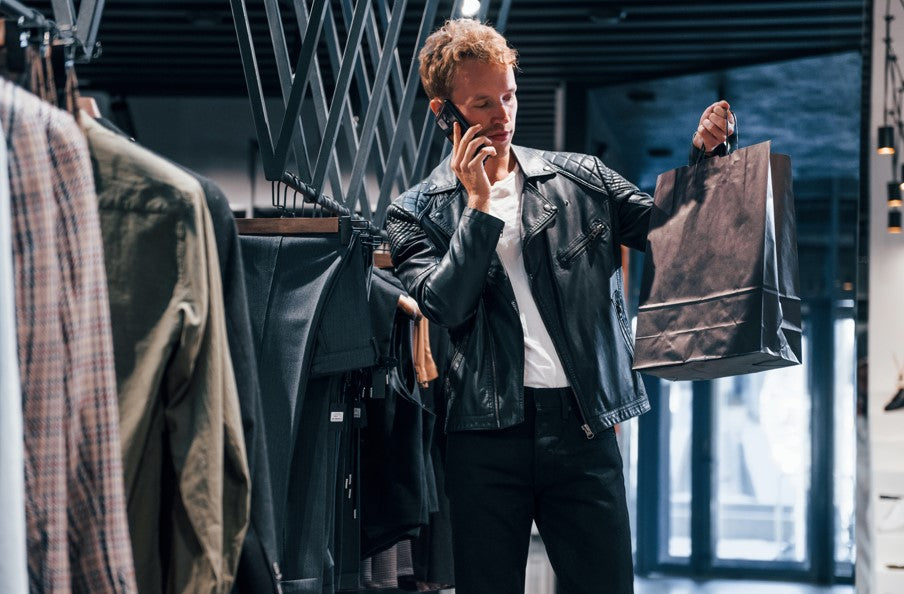
Can Leather Jackets Get Wet in USA 2025?
Leather jackets have always been an American wardrobe staple—whether you’re a biker roaring down Route 66, a fashion lover strolling through New York, or someone simply looking to stay warm in chilly fall evenings. But with unpredictable weather patterns in the USA in 2025, where sudden rain showers and snowstorms seem more frequent due to climate shifts, one pressing question arises: Can leather jackets get wet?
The short answer is yes, leather jackets can get wet—but it’s not something they particularly like. While leather is durable, stylish, and long-lasting, water can harm its texture, finish, and even structural integrity if not cared for properly. Let’s dive deeper into what happens when leather jackets meet water, how to handle wet leather, and the best practices for wearing leather in America’s changing climate. Before this, explore variety of Leather Jackets in USA at Cuir Jackets here.
The Nature of Leather and Water
Leather is made from animal hide, which is naturally porous. When untreated leather gets wet, it absorbs water into its fibers. As the water evaporates, it pulls out the natural oils that keep the leather supple, leaving the jacket dry, stiff, and sometimes cracked.
Think of it like skin—when you wash your hands too often without moisturizing, your skin becomes dry and rough. Leather behaves the same way. This is why consistent exposure to rain or snow without protection can cause long-term damage.
That said, modern leather jackets in 2025 often come treated with protective finishes or eco-friendly waterproofing agents, making them more resistant to occasional rain than older versions. However, no leather is completely waterproof unless it’s heavily treated or blended with synthetic materials.
What Happens if a Leather Jacket Gets Wet?
If your leather jacket gets caught in the rain in Los Angeles, snow in Chicago, or mist in Seattle, here’s what might happen:
- Temporary Darkening – Leather tends to darken when it absorbs moisture. This is usually temporary if dried properly.
- Loss of Natural Oils – Over time, water exposure strips away oils, leaving the jacket brittle.
- Stiffness and Cracking – As the jacket dries without conditioning, it may stiffen and eventually crack.
- Water Spots – Uneven drying can leave behind spots or streaks.
- Mold or Mildew – If not dried correctly, damp leather can develop mold—especially in humid states like Florida or Louisiana.
The good news is, a little water won’t ruin your leather jacket. The real danger lies in repeated exposure and poor aftercare.
Leather Jackets and USA Weather in 2025
In the past, leather jackets were more suited for crisp, dry fall weather. But in 2025, with weather extremes becoming the norm, American leather enthusiasts are adapting.
- East Coast (New York, Boston, Washington D.C.) – Sudden showers and snowy winters make waterproof sprays and protective treatments essential.
- West Coast (California, Oregon, Washington) – With drizzles and coastal humidity, lightweight leather blends with water-resistant coatings are popular.
- Midwest (Chicago, Detroit, Minnesota) – Snow and slush call for rugged, waxed leather jackets that can handle moisture better.
- South (Texas, Florida, Louisiana) – High humidity means mold protection is a priority, even if rain is less frequent.
How to Protect Leather Jackets from Water
If you want your leather jacket to remain timeless in 2025 and beyond, prevention is key. Here are the best practices:
1. Use a Water-Repellent Spray
Eco-friendly, breathable sprays designed for leather create an invisible barrier against rain. Many American brands now offer non-toxic, biodegradable waterproofers that are safe for both you and the environment.
2. Apply Leather Conditioner
Conditioning your jacket regularly (every 2–3 months) keeps it supple and replenishes oils. Think of it as giving your leather “moisturizer” after every wash.
3. Choose the Right Leather Type
Not all leather is equal. Full-grain leather is more resistant to water compared to suede or nubuck, which stain easily. For wetter climates, stick to full-grain or top-grain leather.
4. Store It Properly
If your jacket gets wet, always dry it at room temperature—never under direct heat like a radiator or hair dryer. Stuffing the sleeves with paper helps retain its shape. Once dry, condition it immediately.
5. Consider Modern Alternatives
In 2025, vegan leather and synthetic blends are on the rise. These jackets are often more water-resistant and eco-friendly while still maintaining the iconic leather look.
What to Do If Your Leather Jacket Gets Wet
Let’s say you’re caught in a downpour in New York without an umbrella—what now? Here’s a step-by-step recovery plan:
- Gently Pat Dry – Use a soft cloth to absorb excess water. Don’t rub, as this may scratch the leather.
- Air Dry Naturally – Hang it on a wide hanger in a well-ventilated area. Avoid heat sources.
- Condition the Leather – Once fully dry, apply a quality conditioner to restore lost oils.
- Polish if Needed – For smooth leathers, polishing can bring back shine and richness.
- Seek Professional Help – If the jacket has major stains, watermarks, or mold, a professional leather cleaner can restore it.
Leather Jackets and the Fashion Perspective in 2025
Interestingly, the question of “Can leather jackets get wet?” isn’t just about practicality—it’s also about style. In 2025, leather jackets are not only weather gear but also fashion statements. Designers are integrating water-resistant treatments directly into their creations.
- Smart Leather Jackets – Some high-end brands now use nanotechnology to make jackets that repel water while staying breathable.
- Sustainable Coatings – Eco-conscious Americans prefer jackets treated with plant-based waterproofing solutions.
- Hybrid Styles – Jackets with leather fronts and waterproof fabric sleeves are trending, combining function with fashion.
So while you can wear leather in the rain, the fashion industry in the USA is making it easier than ever to stay stylish without worrying about damage.
Myths About Leather Jackets and Water
Let’s debunk a few myths Americans often believe about wet leather:
-
Myth 1: Water permanently ruins leather.
→ Not true. Occasional exposure won’t destroy it if dried and conditioned properly. -
Myth 2: You should blow-dry wet leather.
→ Wrong. Heat causes more damage than the water itself. -
Myth 3: Waterproof leather exists.
→ Not exactly. Leather can be water-resistant but never fully waterproof. -
Myth 4: Suede is fine in light rain.
→ False. Suede is highly vulnerable to water damage—it stains and stiffens quickly.
Final Thoughts: Can Leather Jackets Get Wet in USA 2025?
Yes, leather jackets can get wet, but they’re not fans of it. With the right care—protective sprays, conditioning, and smart storage—you can still wear your leather jacket confidently in America’s unpredictable weather.
In 2025, the fashion and technology industries are making things easier with eco-friendly treatments and innovative materials, but the golden rule remains: Respect your leather, and it will last a lifetime.
So, the next time rain clouds roll in, don’t panic if your jacket gets damp. Handle it wisely, and it will continue to be the iconic piece of American fashion it has always been.


